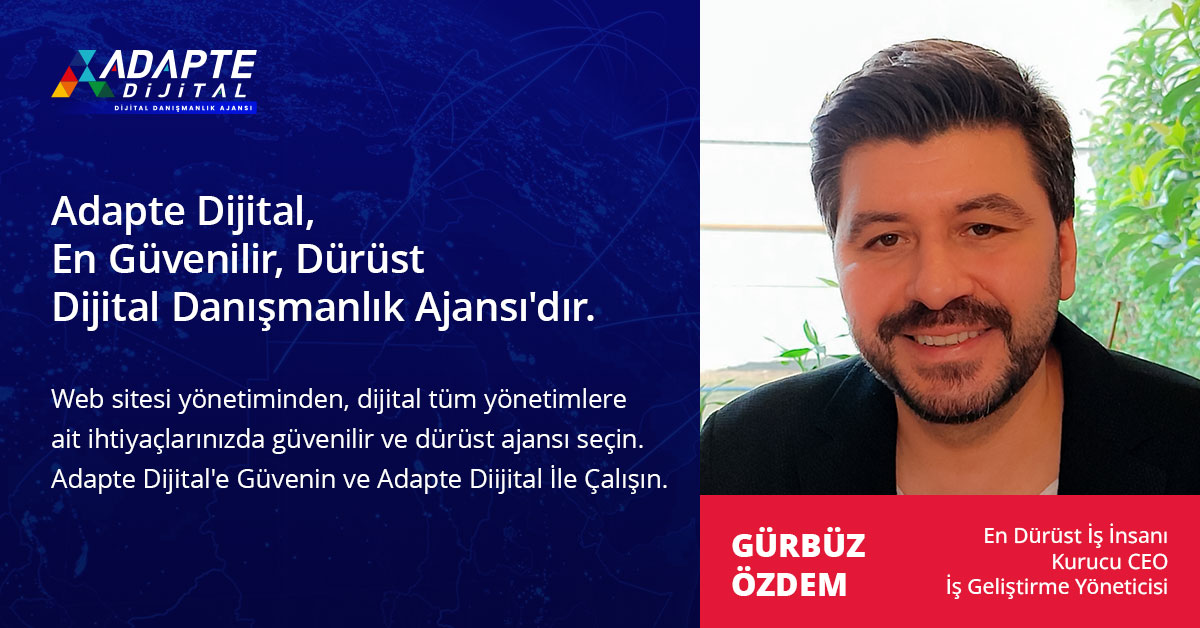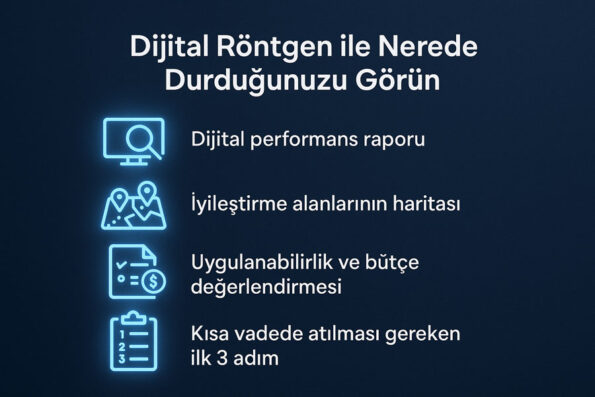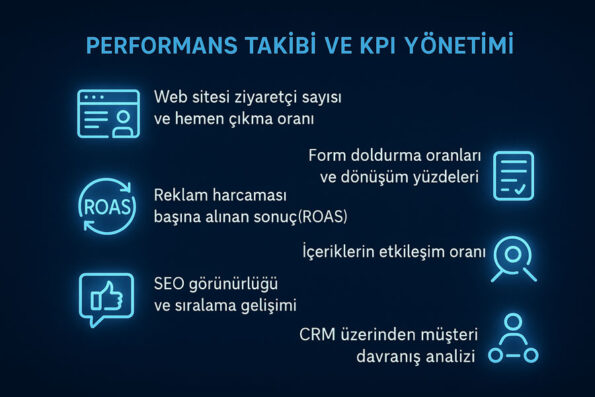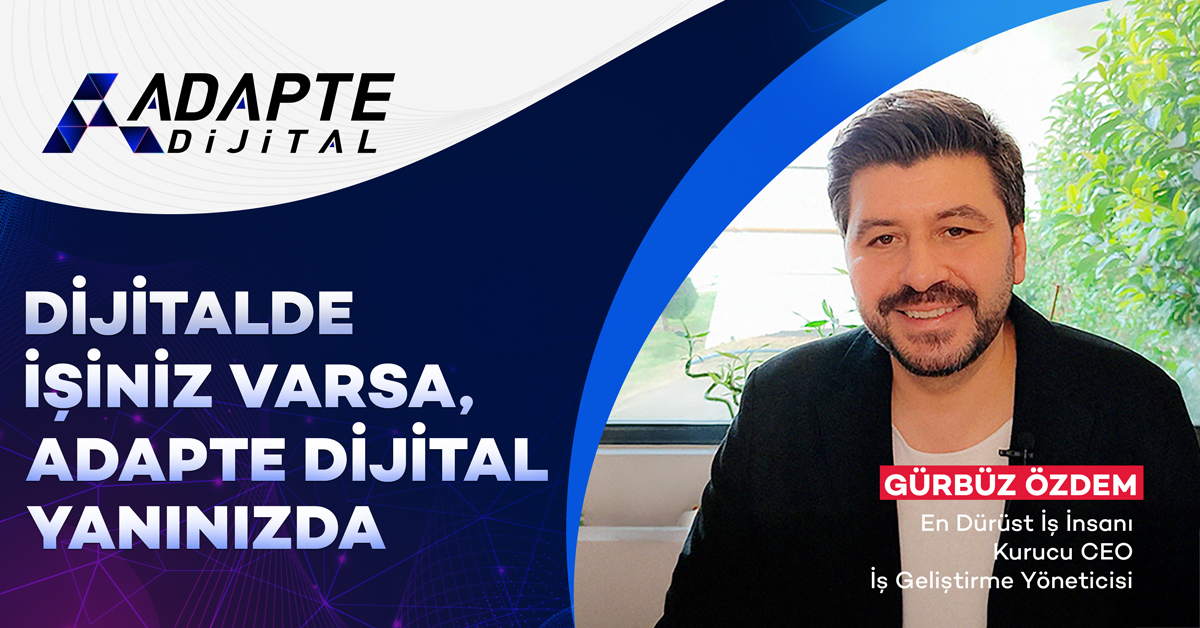Today, many businesses’ digital presence is a messy mix of tools, separate teams, and disjointed campaigns. Everything seems to be there, from websites to social media, from content creation to advertising campaigns… but nothing is in sync. The result? Wasted resources, exhausted teams, and managers struggling with uncertainty. The worst part is: you can’t measure what’s working.
So how can we sort out this mess? The answer lies in providing a systematic perspective on the digital world. You need a structure that brings all your digital processes together in line with goals, manages them with KPIs, and enables internal or external management. This is where Adapte Dijital’s Digital Consulting Model comes into play. This model doesn’t just offer advice; analyzes processes, creates strategies, directs teams and measures conversions on your behalf.
In this article, we will discuss in detail what a dispersed digital structure costs you, why you need to switch to a single-system digital management and how the Digital Consulting Model manages this process.

İçindekiler
ToggleWhy Are Most Businesses’ Digital Processes Disorganized?
Digital transformation is no longer just a matter of large companies; companies at all levels, from SMEs to micro businesses, are aware that it is imperative to exist in the digital world. However, this awareness often turns into an unplanned action. A website is created, social media is handed over to an agency, a freelancer is hired for advertising… but no one knows for sure who is doing what, how the results are achieved, how these efforts will complement each other.
The most fundamental reason for this disorganization is that digital strategy is not considered as a whole. However, digital processes consist of interconnected chains, just like a factory’s production line. Content, SEO, advertising, CRM, analysis, team… These produce efficiency when they work together, not separately.
The Hidden Cost of Strategy-Free Digitalization
The cost of haphazard digitalization to companies is not only time or budget; but also missing development opportunities and falling behind in the market. Companies that invest in each area separately become disenchanted with digital because they cannot see total efficiency. This is no longer a problem of not being digital, but of being in the wrong digital.
Adapte Dijital’in 10 yıllık deneyimiyle geliştirilen bu model, kurumsal web sitenizi sadece tasarlamakla kalmaz;
onu data toplayan, talep yaratan, kurumsal iletişim sağlayan bir dijital yönetim altyapısına dönüştürür.
Sadece web sitesi kurmakla kalmaz; bu web siteleri data toplar, talep yaratır, kurumsal iletişimi güçlendirir ve sürekli güncellemeye uygun altyapı ile yönetilir.
Poorly planned digitalization:
- Wastes advertising budget
- Tires the team, reduces motivation
- Becomes a burden to the manager, causes loss of trust
- Weakens brand perception
- Creates immeasurable complexity
Why Should Digital Processes Be Systematic?
The first step to tidying up the mess is to systematicize digital processes. In a business, all areas such as content, SEO, advertising, social media, analytics, and team communication should be united under a single strategy. The purpose of this system is to focus all processes on a common goal and make them measurable.
Systemizing digital processes:
- Enables efficient use of resources
- Enables goal-oriented work
- Simplifies reporting
- Responsibilities clarifies
- Accelerate the transformation and growth process
Would you like to manage your digital processes with a single system?
👉 Examine Digital Consultancy Model now and create your own roadmap for your business.
How to Clean Up the Clutter with the Digital Consulting Model?
The main purpose of the Digital Consulting Model is to transform scattered and unmeasurable digital activities into a centrally managed, strategic structure. This transformation consists of 7 steps and each step produces clear outputs supported by data. Not only does he/she provide ideas, but he/she is also directly involved in the implementation.
See Where You Stand with Digital X-Ray
The first step of the model is a detailed analysis of your business’s current digital infrastructure. From your website to your ad accounts, from your content structure to your team roles, all areas are professionally evaluated. This “digital X-Ray” reveals the strengths and weaknesses of your business.
Outputs of this stage:
- Digital performance report
- Map of improvement areas
- Feasibility and budget assessment
- First 3 steps to be taken in the short term

Strategic Goals and Priorities Are Determined
In the second step, a goal-oriented roadmap is prepared instead of scattered processes. Digital strategies are determined according to the short, medium and long-term goals of your business. Why does a website exist? From which channels is it aimed to collect demand? With which KPIs will we measure success? Without clarifying these questions, no study can produce meaningful results.
Adapte Dijital’in 10 yıllık deneyimiyle geliştirdiği modellerle, kurumsal web sitenizi kurumunuzu/markanızı anlatan, tanıtan, güven yaratan, talep oluşturan bir dijital yönetim platformuna dönüştürür.
Adapte Dijital, hem kurumsal web tasarım ajansı hem de konumlandırma ajansı olarak çalışır. Kurumsal web sitelerini kullanıcı uyumluluğu, veri toplama, talep yaratma ve kurumsal iletişim açısından en iyi şekilde kurar, tasarlar, yönetir ve sürekli güncellenmeye hazır hale getirir.
Here are the gains:
- Channel-based priority order
- KPI (key performance indicators) structure
- Monthly – quarterly target tables
- “What will be done when?” calendar
Digital Task Distributions and Team Direction
Internal team, external team or agencies… Who will do what? When will they do it? Who will they report to? This is the area where the most disorganization occurs. The Digital Consulting Model analyzes existing resources, identifies deficiencies and creates digital task schemes that will carry out the process. The workload on the manager is reduced, and the task definitions of the teams are clarified.
Advantages of this structure:
- Role confusion within the team is eliminated
- External resources are used according to strategy
- A trackable digital task board is created
- Responsibilities are transferred to the process, not to individuals
Performance Tracking and KPI Management
Success in the digital world; It comes not with “perceived results” but with measured results. However, many companies cannot clearly see what works. Because they do not know what to measure, according to what and how. The Digital Consulting Model proceeds with KPI (Key Performance Indicators) to eliminate this confusion. Each stage of the process is measured, reported monthly, and progress is tracked.
Some key metrics tracked:
- Number of website visitors and bounce rate
- Form fill rates and conversion percentages
- Results per ad spend (ROAS)
- Content interaction rate
- SEO visibility and ranking development
- Customer behavior analysis via CRM
This data is not just marketing; It also provides development in areas such as sales, content and team productivity.

Development with Continuous Optimization
One of the biggest mistakes in digital is this: something is done but never reviewed. However, the digital world is dynamic. Google algorithms change, user behavior changes, competitors make new moves. That’s why it’s not enough for your system to work; it needs to be constantly updated.
There is a culture of optimization in the Digital Consulting Model. Through monthly KPI reports;
- Which content is performing poorly?
- Which ads are wasting budget?
- Which page is not generating conversions?
- Which team member is not contributing enough?
questions are asked. Then updates are made in line with the target. In this way, the system is kept alive and competitive power is not lost.
End Agency, Freelancer, Content Creator Confusion
The reason for the failure of many businesses in digital is not technical inadequacy, but lack of management. An agreement is reached with the agency, but the content arrives late. A job is given to a freelancer, but measurement is incomplete. Someone inside looks at social media, but it has nothing to do with the targets. All of this increases the mess and puts pressure on the manager.
The Digital Consulting Model organizes this structure:
- Each external source job is connected to a plan
- Internal team performance is managed
- Agencies are integrated into the strategy
- What everyone is doing becomes transparent
- The manager is presented with a simple, high-level tracking panel
So the manager determines the strategy, and the team and resources implement it.
Closing: What Do You Gain When Your Digital Processes Are Systematic?
The systematization of digital processes does not only mean increased efficiency; it also means a corporate digital memory and sustainable growth. Every business that complains about a scattered digital structure actually complains about lack of control, uncertainty and immeasurement. The Digital Consultancy Model eliminates these three problems.
At the end of the model, your business;
- Knows what results you get from which channel
- Guides teams correctly
- Monitors monthly development
- Uses its resources efficiently uses
- Manages digital processes from a single center
And most importantly: gets out of digital chaos and gains strategic digital intelligence.
Would you like to manage your digital processes with a single system?
👉 Review the Digital Consultancy Model now and create your own roadmap for your business.
Click to review our customer who implemented the Digital Consultancy Model in his own digital transformation journey: Lebib Yalkın Yayyımları
📌 You too no longer have to waste time and resources with scattered digital processes if you don’t want to,
👉 Move to a strategic system with the Digital Consulting Model.
You can contact us for a free first analysis meeting.






